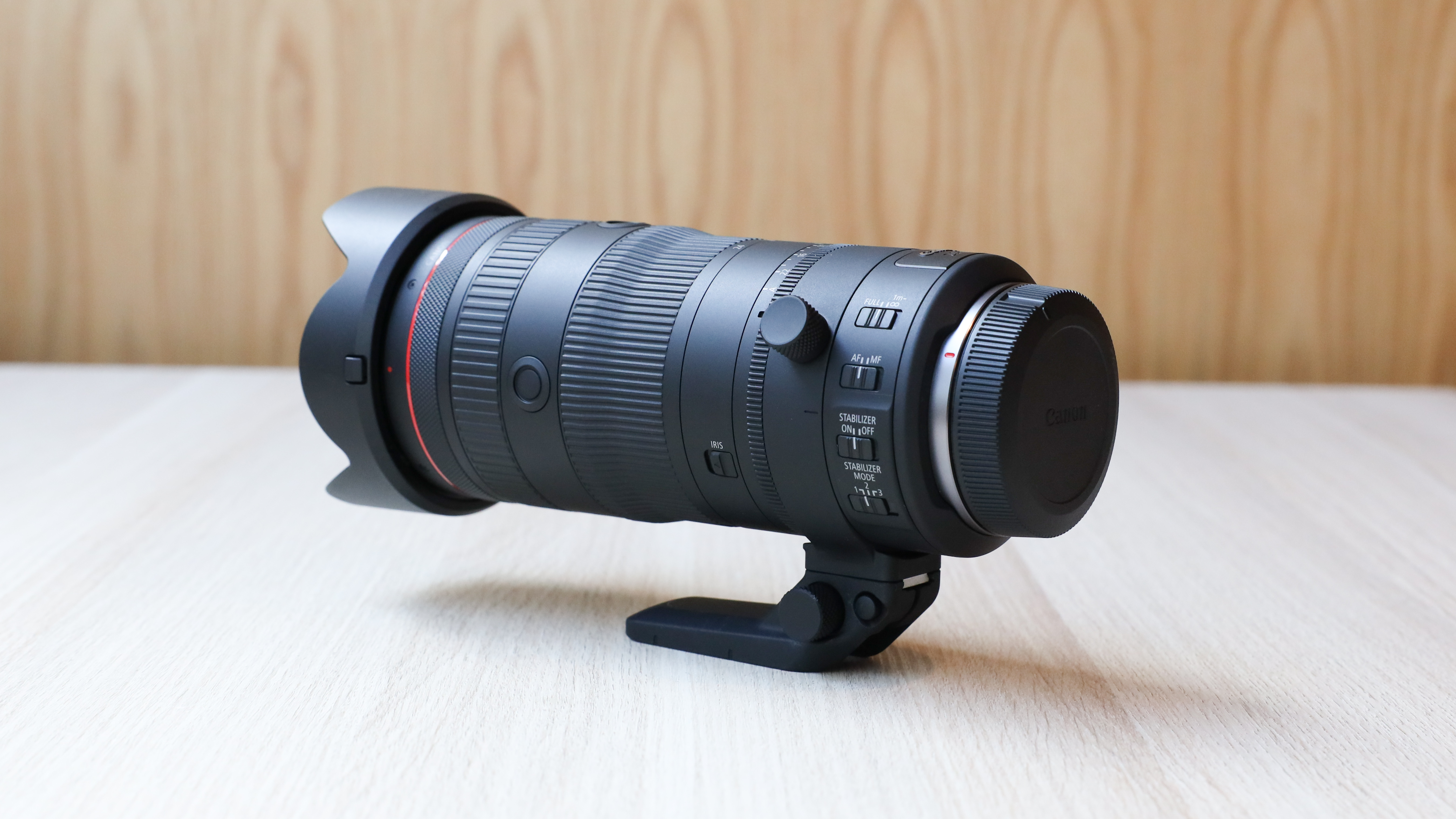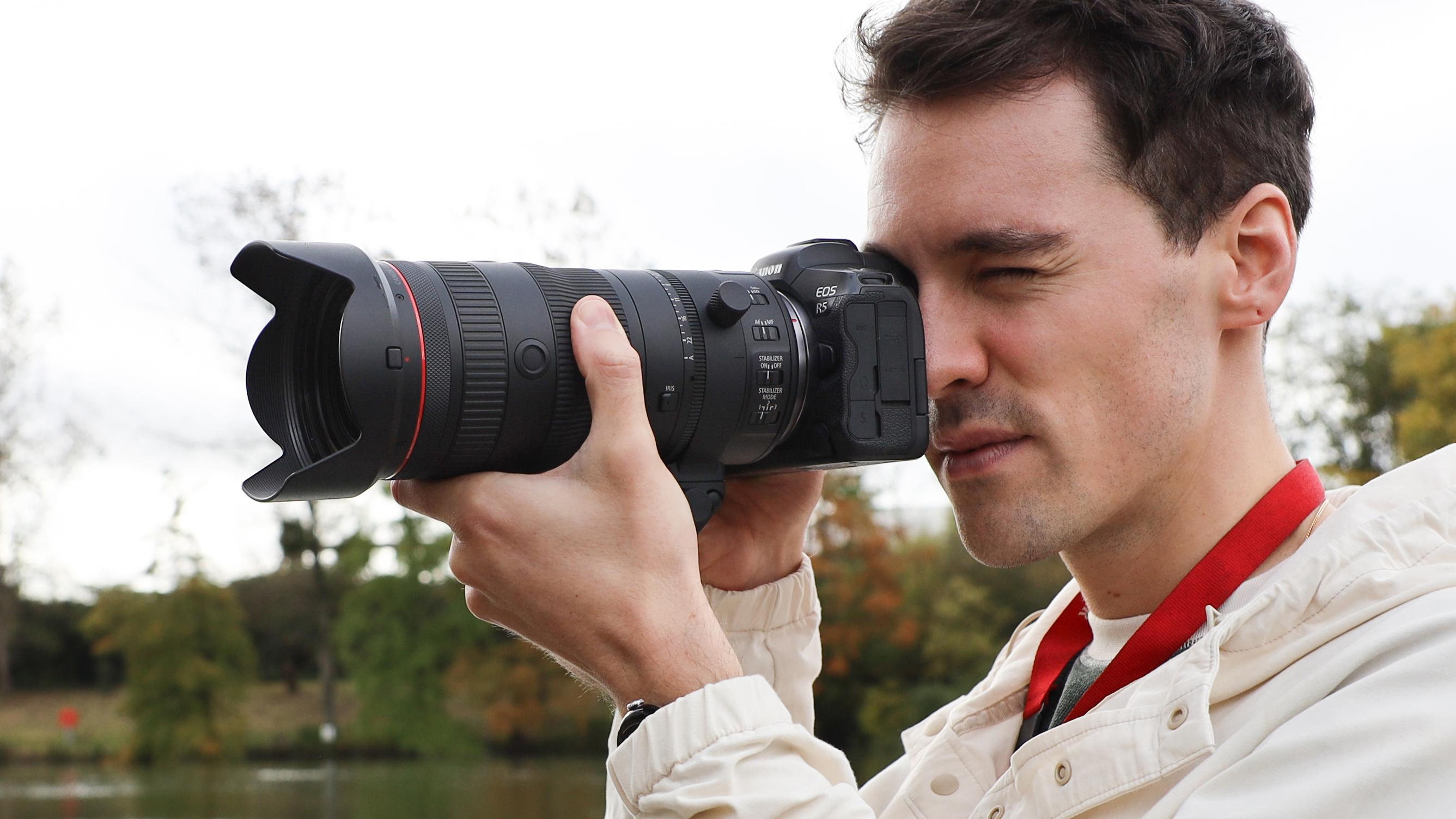I’m sorry, but I just can’t take the Canon RF 24-105mm f/2.8L IS USM Z seriously
So let’s be clear. This is a standard zoom that's so big that it needs its own tripod foot!

Clearly, Canon has identified a gap in the market somewhere between stills photography and cinema-camera filmmaking where a lens like this makes sense. But how much of this lens’s wild specifications, size and price are really just to prove what Canon can do?
So let’s look at the reasoning. Everyone likes a 24-70mm f/2.8 standard zoom but wishes it could be longer. Everyone likes a 24-104mm f/4 zoom but wishes it could be faster. So the Canon RF 24-105mm f/2.8L IS USM Z sounds like a dream come true.
But then the sobering reality kicks in. This lens is as big as a 70-200mm f/2.8. It’s 199mm long and weighs 1.35kg. This is a lens that’s so long and heavy it needs its own tripod foot. Anyone hoping for a new kind of walkaround standard zoom might have to rethink what kind of walking around they’re going to be able to do.
Of course, this lens isn’t designed specifically for stills photographers. It’s the first of a new line of hybrid ‘Z’ lenses built to bridge the gap between stills photography and serious filmmaking. This might yet prove to be one of the best Canon RF lenses to date and I'm left eating my words.

To be fair, as Gareth points out in his Canon RF 24-105mm f/2.8L IS USM Z review, this size of this lens might be off-putting to stills photographers but it’s quite everyday for filmmakers used to full-on cinema lenses.
But then that makes some of Canon’s other decisions look odd. The RF 24-105mm f/2.8L IS USM Z still deals in aperture values rather than T-numbers, and so far the dedicated stepless aperture ring only works for video – so much for ‘hybrid’ appeal. The focus ring is at the front end which should make it easier to hook up with follow-focus units, but it’s up against 'real' cinema lenses which have drive gears built in.
And then there’s the optional power zoom unit. Other power zoom makers just build it into the lens so that you operate it with a simple rocker switch or an on-camera lever. Here, if you want the power-zoom feature you have to buy and bolt on an optional PZ-E2 adaptor that costs $999 / £1,149 / AU$1,799, or a more advanced PZ-E2B at $1,299 / £1,529 / AU$2,510.
Get the Digital Camera World Newsletter
The best camera deals, reviews, product advice, and unmissable photography news, direct to your inbox!
So while numbers like these are pretty modest for production studios used to the cost of cinema gear (believe me, the cost of this lens is nothing in comparison), for the kind of hybrid shooters we imagine Canon is aiming at, that’s a heck of a lot of money.

It’s hard to see the benefit of this monster lens for stills photographers looking for an alternative standard zoom. It achieves a modest increase in focal range over a regular 24-70mm f/2.8 and a modest one f-stop advantage over a regular 24-105mm f/4, but only via an enormous increase in size and cost. It’s not even that great, according to our lab tests. The center sharpness is pretty stellar at any focal length or aperture, but the corner sharpness is decidedly weak at longer focal lengths. It also relies heavily on digital corrections – but then so do most mirrorless zooms these days.
It’s also hard to see what it can offer small/mid-scale filmmakers, vloggers or run-and-gun shooters. This is not a lens for extended handheld use or gimbals. Even the best gimbals might stutter over a 2kg camera/lens combo, and then you need to find an operator with the biceps to handle it. This lens belongs on a tripod.
And this is the thing. If you’re going to the trouble of setting up a shoot with a tripod, talent and a crew, what does this lens do that proper cine lenses don’t? It’s got a long focal range and a moderately fast maximum aperture, but it’s not a cine lens.
I would like to be wrong (I wouldn’t, but you know what I mean).

Rod is an independent photography journalist and editor, and a long-standing Digital Camera World contributor, having previously worked as DCW's Group Reviews editor. Before that he has been technique editor on N-Photo, Head of Testing for the photography division and Camera Channel editor on TechRadar, as well as contributing to many other publications. He has been writing about photography technique, photo editing and digital cameras since they first appeared, and before that began his career writing about film photography. He has used and reviewed practically every interchangeable lens camera launched in the past 20 years, from entry-level DSLRs to medium format cameras, together with lenses, tripods, gimbals, light meters, camera bags and more. Rod has his own camera gear blog at fotovolo.com but also writes about photo-editing applications and techniques at lifeafterphotoshop.com
